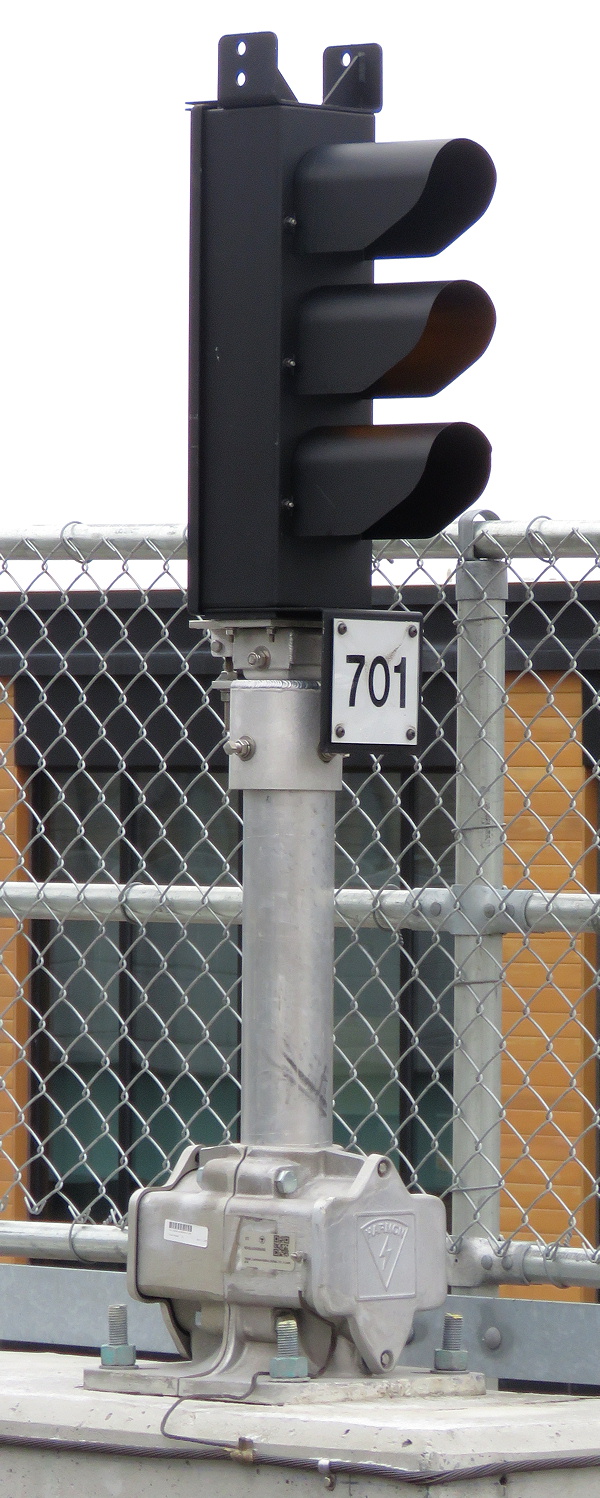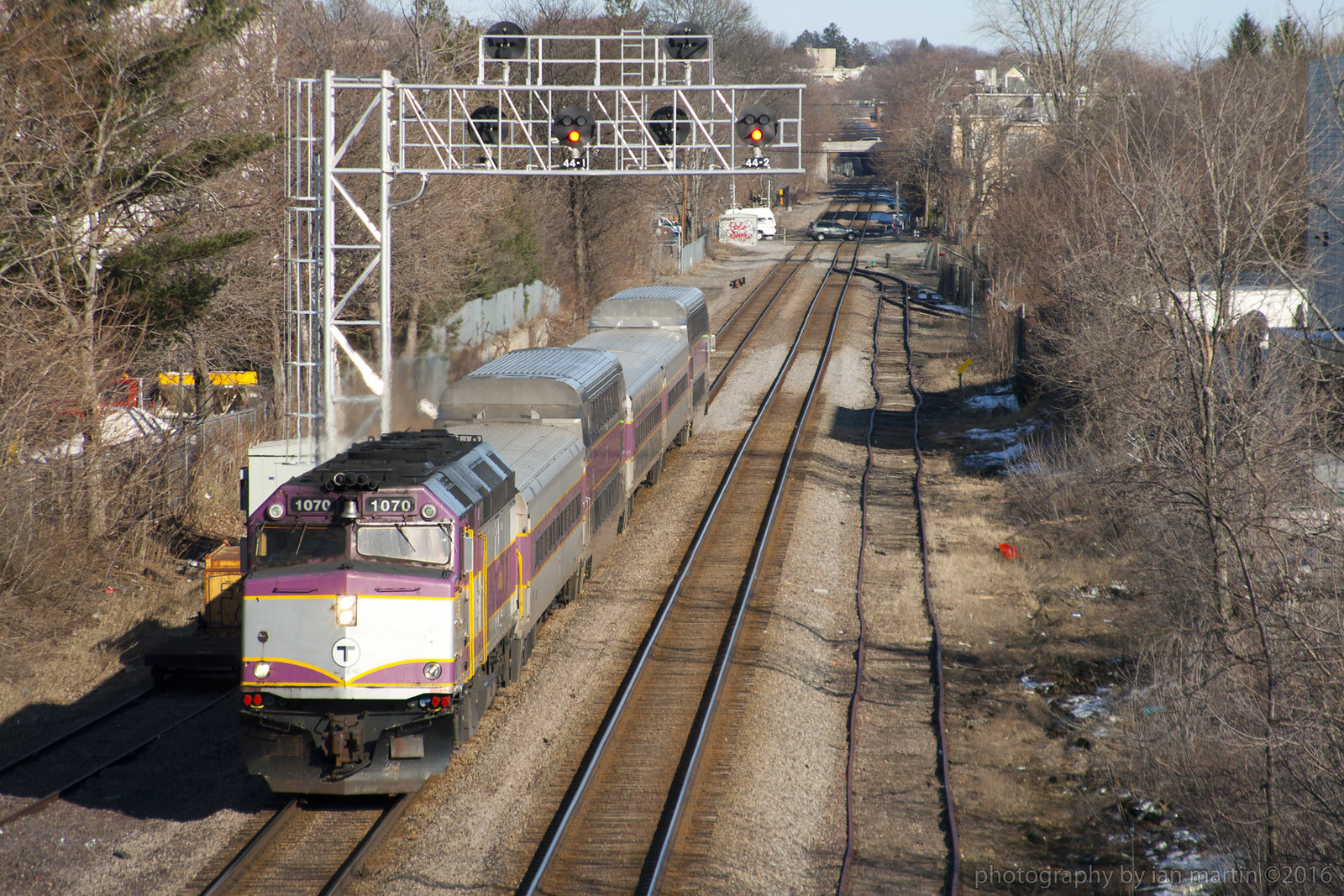Sometime over the winter of 2019/20 the MBTA cut in the last section of Rule 562 cab signal without fixed wayside signal territory on the former Conrail Boston Line between the Amtrak division post at COVE and CP-21 in Framingham. This completes the cab signal conversion project that was imitated by Conrail in 1988 and carried out in three distinct phases over the following 32 years.
 |
| Rule 280a 'C' boards are up at CP-3 (Photo Credit Fred G.) |
In 1988 the Conrail Boston Line, originally built as the NY Central affiliated Boston and Albany (B&A), was showing its age. The two track, Rule 251 ABS signaled line was an expensive albatross in post-industrial New Englande. Seizing the opportunity, Conrail decided to rebuild the line and in the process set a new standard that continues on to this day, most notably under under NS. At the time the state of the art for a Rule 251 ABS conversion was a mix of CTC and single tracking. Conrail decided to take this one step further and installed cab signaling without fixed wayside signals to compliment the adoption of CTC and single tracking on most of the B&A's 200 mile long main line.
 |
| CP-147 with Conrail standard target signals and legacy SA searchlights now serving as Clear to Next Interlocking lamps. |
The first part of this rebuild stretched from
CP-187 at the Post Road Branch junction to
CP-33, midway between Framingham and Worcester. While this system had been tested on the PRR's Conemaugh Line in 1948, the Boston Line project would mark the first use of cab signal only operation by a post-deregulation freight railroad. More surprising is how the former B&A was well away from Conrail's existing cab signal territory on former PRR routes and signaled a commitment. by Conrail, to deploy cab signaling as standard equipment on its full fleet of road freights. Conrail would later repeat the cab signal rebuild process on the Morrisville, Fort Wayne and Cleveland lines before the 1999 sale and breakup halted further expansion of cab signal territory. The project also involved the use of color tri-light signals, a
departure from the small target Michigan Central style searchlights
Conrail had briefly favored during the 1980's. The color tri-lights would remain
Conrail's default signal up to the 1999 sale and beyond via the Shares
Assets Operations.
 |
| Clear to Next Interlocking lamps at CP-21 turned to await a cab signal extension that would take 22 years to complete. |
Halting the cab signals at CP-33 in 1988 allowed the MBTA commuter operation that ran between Boston South Station and Framingham to avoid having to cab signal equip whichever trainsets that on the line. Conrail did eliminate the remaining single direction ABS between CP-33 and COVE and also preserved the line as fully double track. Nine years later, the MBTA was expanding and the Rule 562 cab signal equipped Old Colony lines would generally eliminate the desirability for non-cab signal equipped trainsets running out of South Station. In 1996 the second track was restored between CP-33 and CP-43 east of Worcester with the decision being made to extend the cab signals through to CP-21 Framingham. While 'C' lamps were installed on the eastbound masts at CP-21, they were turned out of service as the recently upgraded CTC signaling between there and COVE was seen as not worth replacing.
 |
| New signals at the new CP-6 |
In 1999 CSX purchased 48% of Conrail including the Boston Line, which quickly became an operational headache as CSX did not otherwise employ cab signaling except for the former Richmond, Fredericksburg and Potomac. As CSX owned the line all the way to the Amtrak division post at COVE in order to serve the
Beacon Park yard and intermodal terminal and has little interest in commuter operations, service on the
MBTA Framingham/Worcester Line began to suffer. In 2011 the state on Massachusetts offered to purchase the line and yard real estate east of CP-45 in exchange for land in Worcester for a new CSX intermodal facility. This would allow the MBTA to improve both service and the physical plant with the first major project being the elimination of a single track bottleneck that existed between CP-3 and CP-4 to support the former yard. By 2017 this project grew to encompass a new full crossover interlocking (CP-6) and, the extension of the Rule 562 cab signaling all the way to COVE.
 |
| Milepost 6 intermediate signals.. |
 |
| Milepost 7 intermediate signals. |
 |
| Milepost 8 intermediate signals. |
 |
| Milepost 10 intermediate signals. |
This unfortunately has meant the elimination of 4, bi-directional searchlight automatic signal locations. Each of these 16 signals were equipped with two heads per mast to support a 4 block signaling arrangement that was necessitated by the short, 1.4 mile signal blocks between CP-11 and COVE.













































